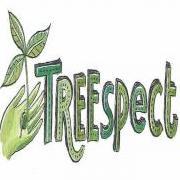Alder trees are usually small in stature, but in perfect conditions can reach heights of 70 ft (21 meters). There are four stages of production on the Alder tree at any given time, the old cones of the previous year’s fruiting, the new year’s leaves or leaf-buds, and the new year’s male and female catkins. The tree matures at about 30 years of age at which time it is capable of producing a full crop of seeds. After this, it can live on to reach an age of about 150 years. It is also the only broad-leafed tree to produce cones. To the ancients, the Alder was particularly revered, for it appeared to bleed like humans. When an Alder tree is felled, its inner wood is white, but gradually over time it turns to a reddish-pink.
The wood of the Alder has many uses. When young it is brittle and very easily worked, while its mature wood is tinted and veined. Due to the Alder’s resistance to water, it was used in the construction of bridges, particularly the long heavy piles driven into the ground or sometimes under water to support it. This quality for long endurance under water also made it valuable for pumps, troughs and sluices for which purposes it is said to have been used in sixteenth-century Venice, as well as France and Holland.
The roots and knots of the Alder furnished good material for cabinet-makers. These were used for making clogs in old Lancashire mill-towns, however, demand exceeded supply and Birch had to be used instead. It was also used for making carts and spinning wheels, bowls, spoons, wooden heels and herring-barrel staves, etc. On the continent it was largely used for making cigar-boxes for which its reddish Cedar-like wood was well suited. After lying in a bog, the wood of the Alder has the colour but not the hardness of Ebony. In the Highlands of Scotland this 'bog Alder' was used for making handsome chairs from which it became known as 'Scottish Mahogany'. The branches of the Alder make a good charcoal, which was a valuable commodity for making gunpowder. Dyers, tanners and leather dressers used its bark commercially and fishermen use it for making nets.
In Celtic folklore, the Alder is associated with the fairies and it was believed that doorways to the fairy realm were concealed within its trunk. The Alder was sacred to the god 'Bran' who carried a branch of it with him during the 'Battle of the Trees' saga, an old Celtic legend. Bran’s totem animal was the Raven, which also became associated with the Alder. Ritual pipes and whistles were often made from Alder wood, many in the shape of the Raven. A Taliesin riddle once asked the question: “Why is the Alder purple?”, and the answer is because Bran wore purple into battle. In some Norse and Irish legends, the first man was formed from the Alder while the first women came from the Rowan.











